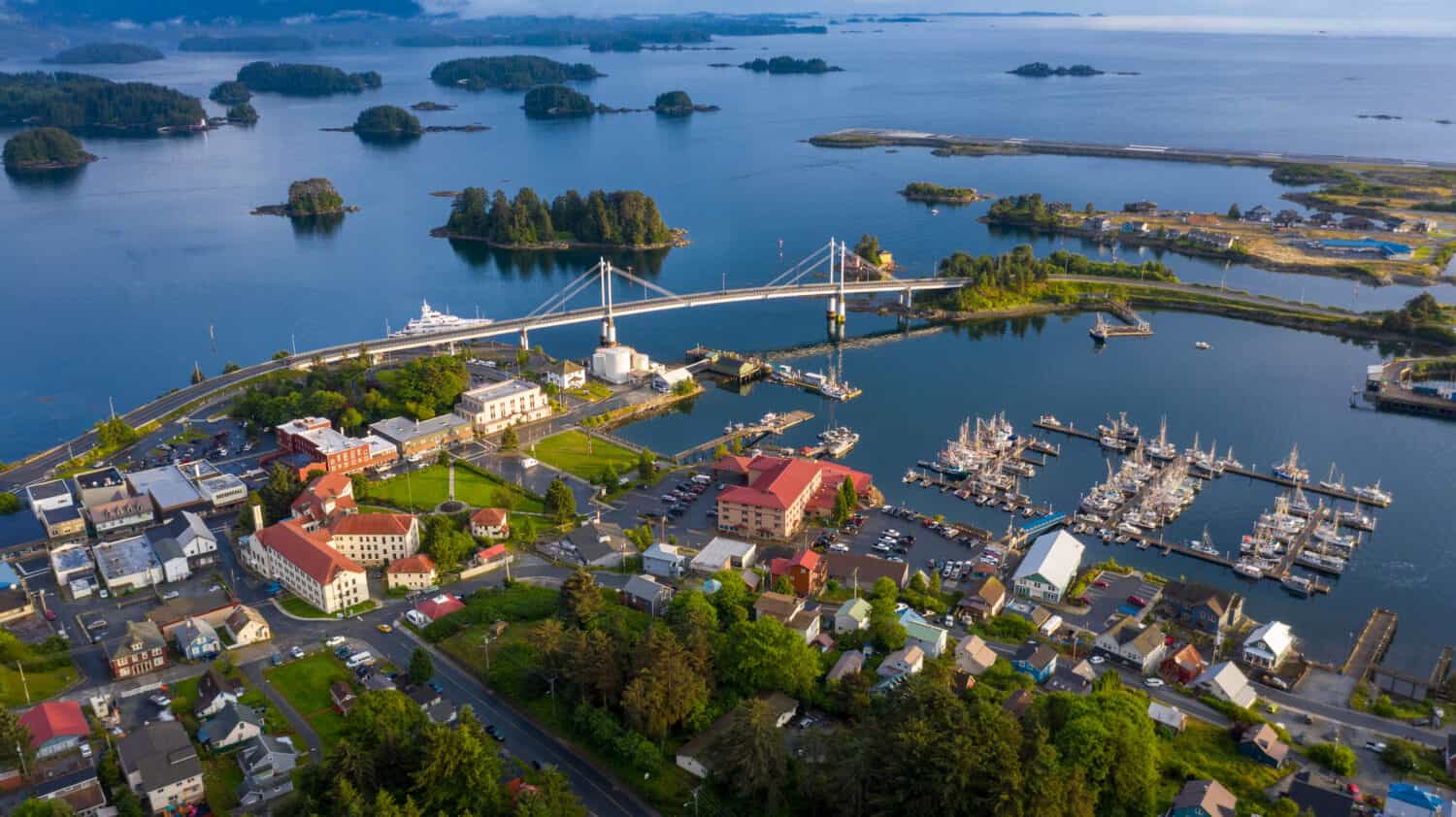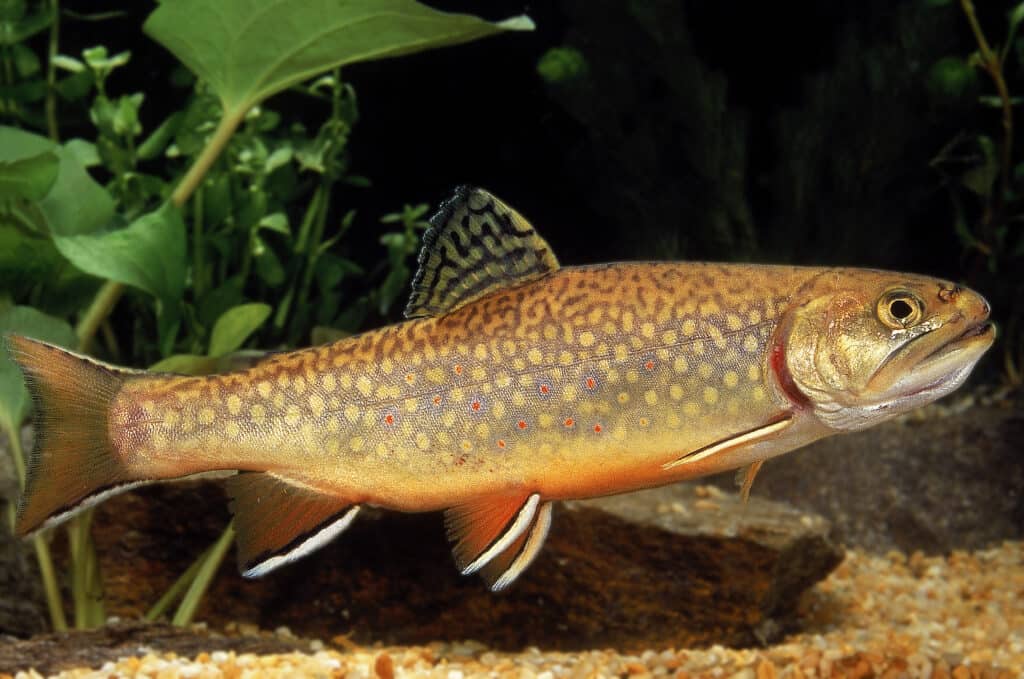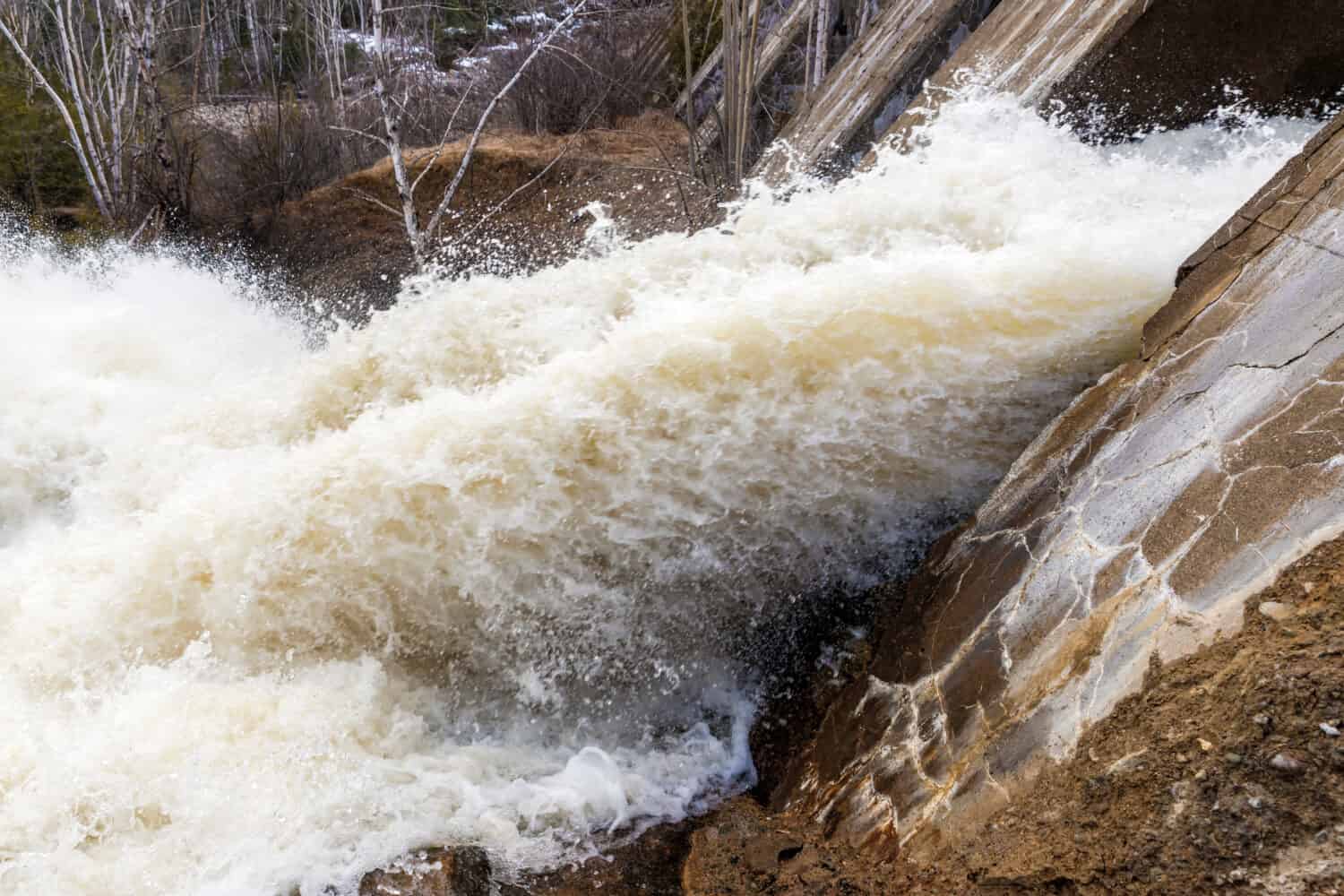Dams serve an essential role in controlling surface water resources. They create reservoirs that supply water for irrigation, recreation, and human consumption. Dams can also generate hydroelectricity and provide flood control for surrounding communities. While some dams measure relatively small, others tower hundreds of feet into the air. You can find around 167 named dams scattered throughout Alaska. That said, what is the largest dam in the state? Keep reading to learn about the largest dam in Alaska.
What is the Largest Dam in Alaska?
| Length | 1,130 feet |
| Height | 160 feet |
| Spillway Capacity | 5,020 cubic feet/second |
| Power Generated Per Year | 60 gigawatt hours |
| Reservoir Capacity | 88,000 acre-feet |
The largest dam in Alaska is the Green Lake Dam, a rock-fill embankment dam located just south of Sitka, Alaska. Green Lake Dam measures approximately 1,130 feet long and around 160 feet high. Its 100-foot-wide spillway possesses a maximum capacity of around 5,020 cubic feet per second.
Green Lake Dam lies on the western coast of Banarof Island in the Gulf of Alaska. It is located about 14 miles southeast of the town of Sitka. The dam impounds Green Lake, a natural lake fed primarily by glacial runoff. You can find Green Lake Dam on the western edge of the lake.
The Vodopad River feeds into Green Lake on its eastern shore. At maximum capacity, the lake contains around 88,000 acre-feet of water, while its catchment area covers 28.8 square miles. Upon passing through the Green Lake Dam spillway, water from the lake falls into Silver Bay below the dam.
History of the Green Lake Dam

The population of Sitka grew exponentially from the 1930s through the 1970s.
©Roman Tigal/Shutterstock.com
Green Lake is a naturally forming Lake on Banarof Island. The Tlingit people inhabited Banarof Island for thousands of years. Russian explorers first arrived in the area where the town of Sitka now resides around 1799. After some conflicts with the Tlingit people, Russia managed to establish a foothold on the island. Over the next few decades, the area grew into an important trading and transportation hub. The area fell under U.S. control after the Alaska Purchase in 1867, and the population of the town tripled from 1930 to 1970 thanks to increased industrialization and development in the town of Sitka.
By 1970, Sitka’s population hovered around 3,370 people. Just 10 years later, its population hovered just under 8,000. The unprecedented growth in Sitka’s population led to calls for increased energy production. Prior to the 1970s, all power in Sitka came from burning diesel fuel. However, this process is costly and dirty, and the residents and authorities of Sitka wanted to find new ways to generate consistent power for the town. It was around that time that plans started to circulate about building a hydroelectric dam on nearby Green Lake. Given the rapid growth of the city and its mounting need for energy, the project received swift approval.
Construction of the Green Lake Dam began in 1978 and finished in 1982. Upon completion, the dam raised the maximum elevation of the lake from 230 feet to around 395 feet above sea level. The power station at Green Lake Dam can generate around 60-gigawatt hours of electricity per year. Along with the energy produced at the nearby Blue Lake Dam, this electricity provides most of the power for businesses and homes in Sitka. That said, residents must still occasionally burn diesel for fuel when electricity demands exceed the hydro capacity of the two dams.

Wildlife You Can Find Around the Green Lake Dam

The brook trout is one of the most common fish species found near Green Lake Dam.
©Slowmotion GLI/Shutterstock.com
Green Lake Dam and Green Lake lie on Banarof Island, which belongs to the Alexander Archipelago off the southeastern coast of Alaska. Much of the land on the archipelago and nearby mainland belongs to the Tongass National Forest, the largest national forest in the United States. Altogether, the Tongass National Forest encompasses roughly 16.7 million acres.
The Tongass National Forest is home to many species of common and rare animals. In the area around Green Lake Dam, you can see various wild animals, including:
- Bears
- Sitka black-tailed deer
- Mountain goats
- Wolves
- Bald eagles
The waters of Green Lake also support native and introduced fish species. Brook trout rank among the most caught fish in the lake. While not native to the lake, brook trout can be caught both near the shoreline and in inlet streams around the lake. The Medvejie Fish Hatchery also raises juvenile pink and chum salmon in pens around Green Lake.
You can also find a wide variety of aquatic animals in Silver Bay, just below Green Lake Dam. Animals living in the waters of Banarof Island include:
What Would Happen if the Green Lake Dam Ever Broke?

If the Green Lake Dam broke, the people of Sitka would lose a major source of hydro power.
©Doug McLean/Shutterstock.com
The Green Lake Dam’s primary function is to provide power to the nearby city of Sitka. As such, the implications of the dam breaking must be examined with this reality in mind.
Green Lake Dam can generate approximately 60 gigawatt hours of electricity annually. That said, this represents peak capacity and does not represent the true amount of energy generated in a given year. In some years, the dam will generate only a fraction of this energy. If the Great Lake Dam were to break, the power generated by the dam would go away. This would deliver a crippling blow to Sitka and its residents.
Currently, Green Lake Dam and Blue Lake Dam provide Sitka with most of the energy it needs. However, during especially cold months, energy demand increases, which can cause demand to outstrip hydropower supply. When this happens, people normally turn to burning diesel for power.
Back in October 2016, the Green Lake Dam hydro plant shut down due to a hydraulic ram failure. The water-powered pump failed during a planned inspection of the Green Lake Tunnel. This forced Sitka residents to rely solely on the Blue Lake Dam for energy until the Green Lake Dam’s hydraulic ram was repaired.
Unfortunately, repairs took longer than expected, and the dam ultimately didn’t return online until January 7, 2017. While Sitka can rely solely on hydropower during the warmer months of the year, the same doesn’t hold true for the cold winter months. During the winter, power demand increases, which often forces the Sitka Electric Department to burn diesel to take up the slack. When operating during peak load periods, burning the required amount of diesel costs around $50,000 per week. The Green Lake Dam was out of commission for 84 days, which forced the city to rely even more heavily on diesel for power. Not only is this expensive but burning diesel also contributes to air pollution.
Where is the Green Lake Dam Located on a Map?
The Green Lake Dam is a mid-sized traditional dam located near Sitka, impacting only a small section of the Vodopad River. The dam is around 14 miles southeast of the town of Sitka.
Here is the Green Lake Dam on a map:
The photo featured at the top of this post is © / Original
Thank you for reading! Have some feedback for us? Contact the AZ Animals editorial team.






